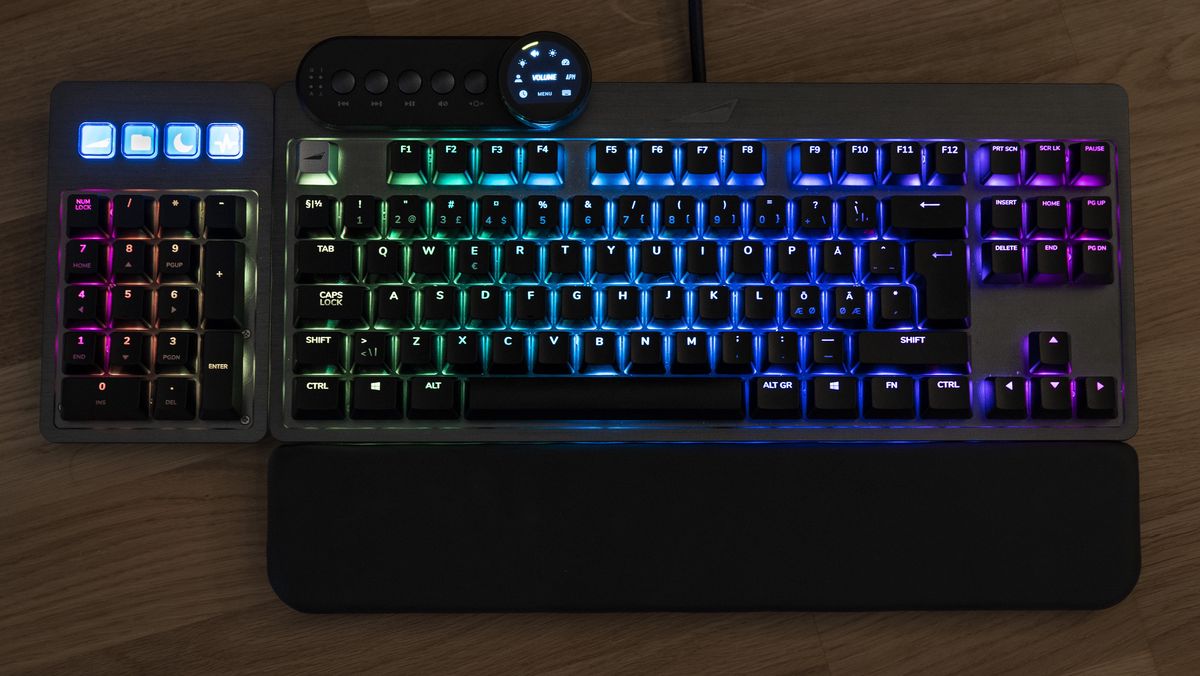In recent years, Intel has been preparing to take on AMD and Nvidia with its “Arc” graphics cards.
They have now shared more information about one of their most powerful cards, called the Arc Alchemist A750, at YouTube channel.
The company conducted its own performance measurements in 49 different games. These allegedly show that the Arc Alchemist A750 is on par with the mid-range Nvidia GeForce RTX 3060 card.
The card is said to maintain at least 60 frames per second in 1080p Ultra HD (or Full HD) detail, as well as FPS at 1440p “high” graphics detail.
It’s always a good idea to measure companies’ own measurements with caution, but Intel believes its measurements give a realistic impression of the Alchemist A750’s performance at launch “later this year.”
The Alchemist family will be Intel’s first generation of Arc graphics cards, and will be divided into three “performance classes”. Groups 3, 5, and 7, where higher numbers mean higher performance.
a7Thus 50 belongs to the most powerful series that Intel plans to launch in the Alchemist family, but a slightly more powerful A770 is also planned.
It was previously rumored that Intel would be able to match Nvidia’s more powerful RTX 3070 graphics with a raw Alchemist card, but that seems less likely now.
In any case, AMD and Nvidia are expected to release a new generation of graphics cards this fall, which will crush Intel’s first generation Arc Alchemist graphics cards in terms of performance. It is uncertain which cards will be released first.
The first Arc Alchemist graphics cards were expected to be on the market by the end of the first quarter of this year, before being delayed until the second quarter. Recently, Intel stated that the cards will be on the market “within the year”.
They’ve previously said they have plans ready for several generations of graphics cards that will succeed the Alchemist family. as Battlemage, Celestial, and Druid in the coming years.
The average performance measured against competing graphics cards that are now nearly two years old means Intel’s Alchemist generation won’t be very interesting to die-hard gamers. For the “general public” there is still good news with more competition in the sector, and in the long run it could be good news for gamers as well.
Intel is expected to challenge the best of AMD and Nvidia’s cards soon when the third generation of “Celestial” Arc cards come to market. This is expected within two years.
Intel has brought in many top graphics experts from Nvidia and AMD to work on Arc graphics cards in recent years. Like Tom Petersen who came from a joint position in PR and engineering at Nvidia, and Raja Kodori who was head of Radeon development at AMD. Intel has also renewed its graphics card drivers, announcing that its cards will support the same modern technologies as its competitors.
Among other things, Intel cards will support ray tracing, “grid shaders” and “variable rate shaders”, increasing performance by only applying shaders and coloring where the player can perceive it.
In addition, the cards will support XeSS or Xe Super Sampling, which, like Nvidia’s DLSS technology, uses artificial intelligence to upgrade games to higher resolutions. As with DLSS, games that will take advantage of XeSS should be developed with this in mind, but it’s already clear that games like Death Stranding, Hitman III, Shadow of the Tomb Raider, and The Settlers will support this technology.

“Web specialist. Lifelong zombie maven. Coffee ninja. Hipster-friendly analyst.”







